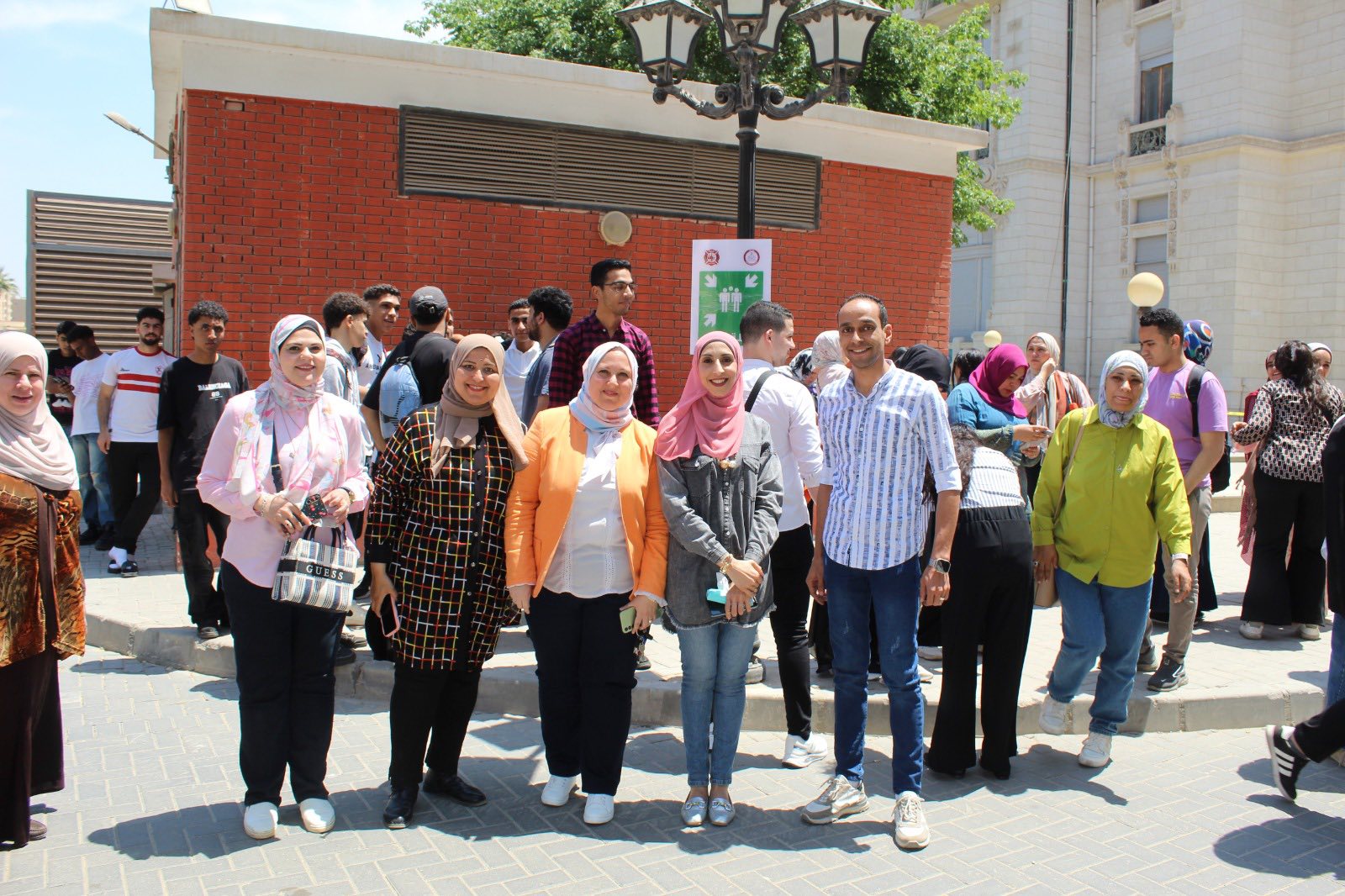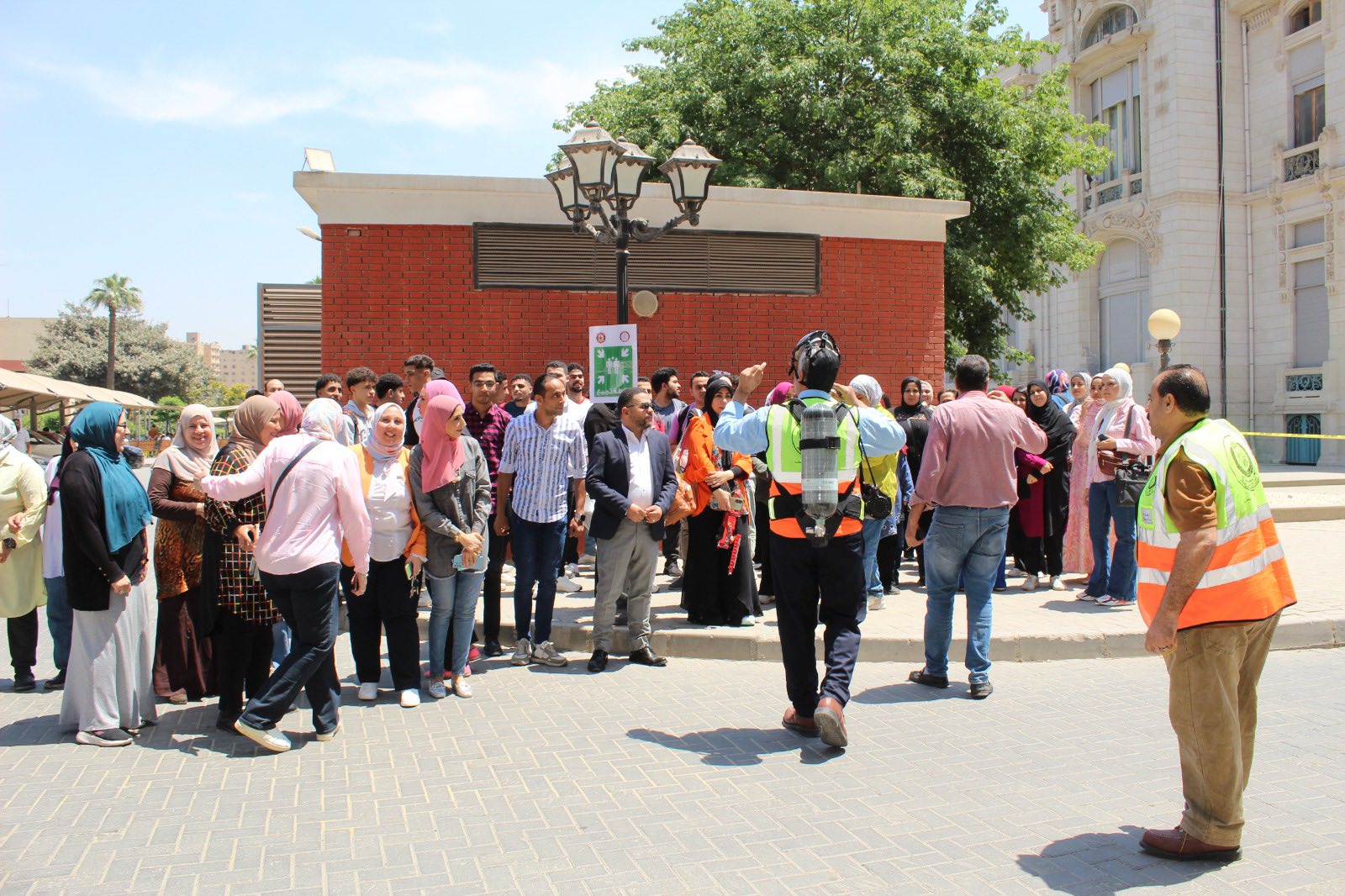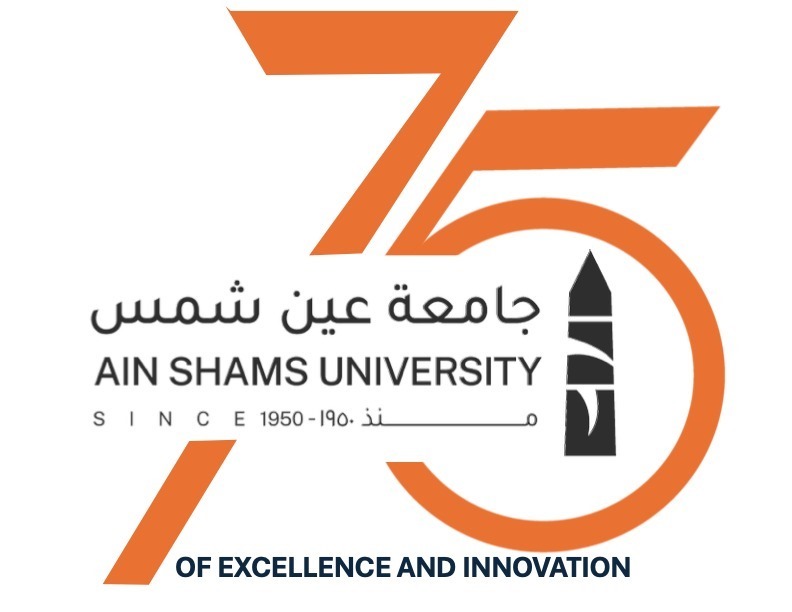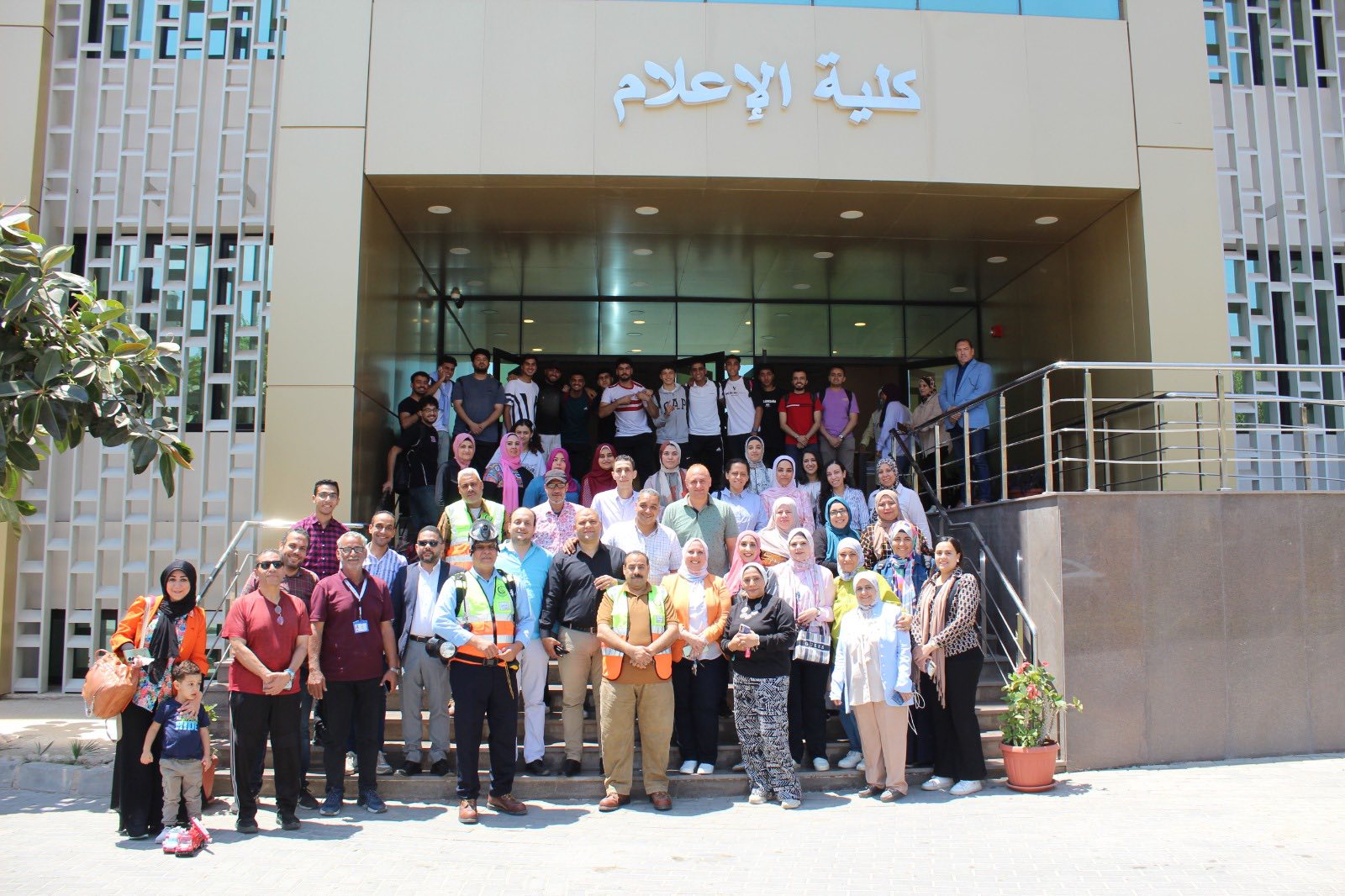The Faculty of Mass Communication organizes a crisis and disaster management course in cooperation with the Civil Defense Department
Under the patronage of Prof. Mohamed Diaa Zain El-Abedeen, Prof. Ghada Farouk, Vice President for Community Service and Environmental Development, and the supervision of Prof. Heba Shahin, Dean of the Faculty of Mass Communication, and Prof. Salwa Soliman, Vice Dean for Education and Student Affairs, the Faculty organized a two-day training course on dealing with potential crises and disasters in educational institutions. The course aimed to raise awareness among faculty members on how to act when faced with risks. The course was held in cooperation with the University's Civil Defense Department.
Dr. Samar Sabry, Director of the Crisis and Disaster Management Unit, Dr. Sherine El-Iraqi, Deputy Director of the Unit, and Mr. Mohamed Hamdy, Director of the Faculty's Civil Defense Unit, participated in the organization.
 |
 |
The first day witnessed a theoretical training presented by Mr. Adel Abdel Latif, Director of the Civil Defense Department, Mr. Abdel Ghaffar Mohamed, Deputy Director of the Civil Defense Department, and Mr. Samir Farouk, Civil Defense Specialist. The training focused on identifying the stages of crises and raising awareness of how to manage disasters such as earthquakes and fires. It also covered precautionary measures and prevention methods, such as securing electrical panels, avoiding using elevators, not standing next to walls, electrical poles, or glass windows, and ensuring that emergency stairs are clear of obstructions to facilitate their use when needed. It also emphasized the need to follow the road signs in educational institutions in times of danger and to head to the safe assembly points designated by the Civil Defense Forces. The explanation was supported by an explanatory video.
Civil Defense members emphasized the "culture of emotional stability" as the most important component of disaster response, and the need for individuals to remain calm during emergencies.
On the second day of the course, a simulation exercise was conducted to evacuate the faculty building, with the participation of all faculty members, including faculty staff, teaching assistants, students, and employees.


.svg)

